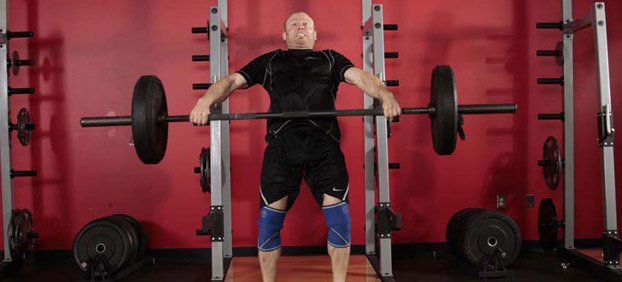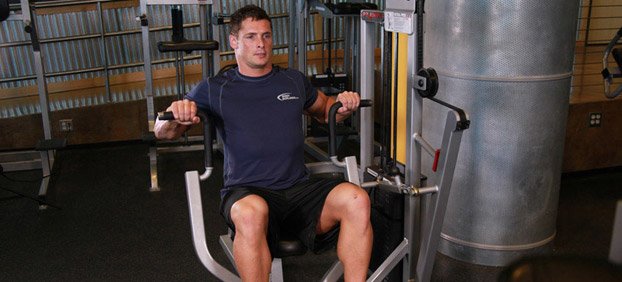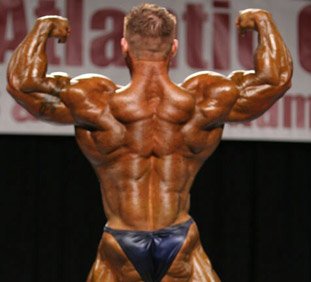It's officially "the dead of winter" and according to bodybuilding convention now is the time to slow it down, lift heavy and fatten up, right? Not so fast, Cheech. While the colder season does provide plenty of incentive to pack on the pounds (grandma's homemade stuffing, anyone?) it's very same lures can sabotage a carefully planned regimen and blur an otherwise sharp physique.
To compound the matter, our bodies go through a natural stasis cycle during the shorter, colder days of winter which finds us more conducive to putting on fat than during summertime. So, while there is the opportunity for bodybuilders to use the winter to their mass-gaining advantage, it's all too common that we find our hard-earned physiques looking more like a snowman than an Olympian come Spring.
Fortunately the solution is within reach, and with just a little extra sweat you should be able to make those all-important offseason size gains while staying within striking distance of a beach body.
1. The Big Idea
There's a pervasive, antiquated dictum that many bodybuilders still hold dear circa 2011-one that's about as modern as the "women weaken legs" theory expounded by grizzled old boxing coaches. It holds that if you want to get big, you have to train heavy and slowly: keep the weights high, the reps low and the rest periods long-as in three minutes or more.
It's not a bad philosophy if you're training to become a powerlifter or have little concern for the amount of adipose tissue you have covering your muscles.
If, however, your goal is to acquire a muscular physique, and one whose muscles can actually be seen without the use of a sonogram, you might want to consider a different style of training; one that blends speed, strength, endurance and power. This involves higher reps, shorter rest periods, a dose of explosive movements and, of course, heavy (but not too heavy) weights.

You're Looking At Higher Reps, Shorter Rest Periods,
A Dose Of Explosive Movements, And Heavy Weights.
2. Proof Positive
There's plenty of anecdotal evidence supporting a more robust training style than the plodding 6-10-rep scheme that has commonly been hailed as the be-all/end-all for muscle development.
In my countless interviews with all the top professional bodybuilders I've found that more and more they're turning to higher rep schemes, even in their offseason, than what were once the norm.
Whereas in the past 10 reps might have been a stopping point, today pro's aren't afraid to lighten the load a little en route to 15, 20, 30 or even more reps per set, and it doesn't seem as if they're getting smaller than the pro's of 30 years ago. Of course a guy like Flex Lewis isn't going to be hitting 30 reps per set all the time, but then our KTD routine isn't meant to be followed at the exclusivity of others.
For those who might fear that the additional few reps and quickened pace could sabotage their hard-earned muscle gains, consider athletes in sports ranging from football to gymnastics to track and field. NFLers can't be accused of being small, yet their workouts are fast-paced and encompass far more cardiovascular training (ie- blocking practice, wind sprints) than an offseason bodybuilder's ever will.
Gymnasts use little more than their bodyweight in their training for what amounts to many thousands of reps per workout performed over the course of 6-hour workouts, yet we've all seen those in the Olympics whose arms we wouldn't mind owning.
"...certainly your mass can withstand the minor adjustments of the KTD system."
An even more extreme example is the sprinter whose primary work involves countless explosive steps coupled with light, high-repetition weight training. Yet look at the muscularity of world class sprinters like Maurice Greene, Shawn Crawford and Tyson Gay.
Of course the plan isn't to have you forgo weights in favor of bodyweight training or running a track, but if a variety of athletes can build and retain impressive amounts of muscle while enduring higher-rep faster-paced workouts, certainly your mass can withstand the minor adjustments of the KTD system.
3. Introducing KTD
Now that you have an idea of the premise behind KTD, let's get into the nuts and bolts of it. First of all KTD stands for Kinetic Triple Drop, as in drop sets. The overriding tenet involves performing triple drop sets with 30 seconds of rest between each master set.
Each master set is broken down into three segments of 10-15 reps each. The rest taken between each drop should only be for as long as it takes to drop (or strip) the weight enough to allow you to perform the next drop set.

Rest Times Between Drops Should Only Be As Long As
It Takes To Decrease The Weight You're Lifting.
You'll want to switch out your current routine with KTD for 4-6 weeks to kickstart fat burning. Then you can consider alternating KTD with your current routine-one week one/one week off. This should be enough to help keep your fat levels down while allowing you to achieve maximum growth.
Of course you can stick with KTD all year long, the beauty of it being that it decreases your need to perform separate cardio when in maintenance mode. Because KTD both stresses fast twitch muscle fibers and stimulates heart action it serves nicely as a resistance/cardio hybrid.
For each set you'll start with a weight that's approximately 80% of what you would normally use for ten reps. So, if you can max out with 100 pounds for 10 reps in the barbell curl, you're going to go for 10 with 80 pounds.
"...the beauty of it being that it decreases your need to perform separate cardio..."
Immediately upon completing that first set you will perform the same movement for the same 10 reps, but with about 25% less weight.
In other words, if your first set was with 80, the first drop set will be with 60 pounds. Finally you will drop the weight by another 20%-in this case leaving you with 45-and knock out another 10, all performed without rest. You'll use the same weight for following sets, resting 30 seconds between master sets.
A few points to keep in mind:
- Machines are often ideal for KTD3-style training, for two reasons. One is that it's simply easier to repine a stack that strip weights or hunt for a lighter dumbbell. The other is that when you become as fatigued as you will be on the 30-45th rep of a set it's safer to be using a machine than free weights. Of course KTD can be performed quite nicely with free weights too.
- The routine is broken up into three days: Pushing, Pulling and Legs on a 3-on/1-off; 3-on/2-off cycle. Abs are trained every day, briefly.
- One effect of this style of training you'll notice immediately is the massive pump you'll get. Some say that a pump isn't an indication of muscular growth, but there's no denying that it's a pretty cool feeling to have in the gym, and one that will surely turn heads.
- If you can't complete the allotted number of reps in drop sets 2 and 3 the first time, it's okay. Your goal will be to complete all reps for all sets the next time. Once you can, increase the weight.

Machines Are Ideal For The KTD Method As
It Is Easier To Decrease The Weight.
Remember, keep the rest to a minimum and the intensity to a maximum. If you're following KTD strictly you won't have time to chat up your gym buddies or even glance at gym hotties. Don't worry though-they'll understand when they see the results of your efforts.
4. The KTD Routine
Day 1 And 5: Push Workout
| *TERMS YOU'LL NEED TO KNOW |
Triple Drop Sets - Perform a set of the designated reps, immediately decrease the weight and perform another set of the designated reps, decrease the weight once more and do one more set of the designated reps.
Negative Failure - Perform the exercise normally for as many reps as you can. When you can't do anymore start in the contracted position and perform the negative portion of the exercise only. When you can't perform any more negative reps you've reached negative failure.
|
|
Day 2 And 6: Pull Workout
Day 3 And 7: Legs Workout
Other Recommended Articles
I will teach you one of the most advanced weight training techniques in the world for developing size and strength. Here is a breakdown of sick sets and suicides for maximum muscle growth. Learn more.
Stuck in a plateau? Looking for a way to increase intensity? Blast your muscles into oblivion with these four powerful & proven HIT techniques. Try them now & watch your muscles grow while burning fat!
Roger Lockridge takes Kris Gethin's Dramatic Transformation Principle to the gym for some shoulder dropsets. Read on to see how he did!



































































